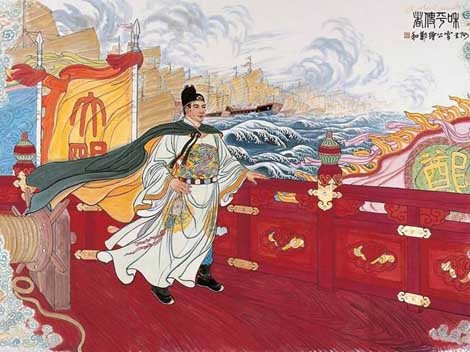To many Southeast Asians, particularly those residing in Malaysia, Indonesia and Singapore, Zheng He, or Cheng Ho as he is better known in this part of the region, is held with great reverence. Temples have been built to enable people to worship him as a deity by not only the Chinese but also other ethnic groups. One reason is that he was a Muslim and he distinguished himself by not imposing his own religious persuasion on people of other faiths. Zheng He built many temples especially Mazu ( Goddess of the Sea) temples. He made generous donations to many temples in China and in Sri Lanka. He also inscribed texts of Buddhist scriptures and donated them to Buddhist temples. He gave assistance to people in other regions irrespective of whether they are Muslim, Buddhist, Taoist or Hindu. He was instrumental in building mosques in many places he visited and he appears to favour countries that are Islamic. There was no record to state that he visited Mecca, but his father and grandfather did. Also he sent some of his crew to visit the Mecca. His footprints have been left not only in Southeast Asia, but also in countries around the Indian Ocean to as far as Somalia and Kenya.
Zheng He has become a legend and worshipped as a deity for many people in Southeast Asia. However, it has also become apparent that Zheng He’s exploits as a master navigator have become obscured in spite of being commander of the World’s largest fleet of wooden ships ever assembled and the most powerful fleet of his era. His acts of diplomacy through practical help given to local rulers including installing some as rulers in their own land had receded into the background. Our society’s mission is to unveil the historical facts relating to his seven great voyages in order to bring to light the truth of his contributions not only to Imperial Ming to whom he owes his allegiance but also his deeds and acts of support for local people and rulers in the lands that he visited during his voyages.
The Society also hopes to uncover the technological developments that his ships and manner of navigation that his fleet employed. It is hoped that, the fact that he was Chinese, though of Persian descent and a devout Muslim could become instrumental to bring about greater mutual understanding and appreciation among people of all ethnic groups in the Asian-African region. He honoured and held in respect people of other faiths. He paid respect to the Goddess of the Sea or Mazu or Tien Fei (heavenly queen) whom he asked for succour and blessings before the start of his voyages. He was warmly received by most states that he visited. His voyages promoted trade and helped to develop the Maritime Silk Route to complement the better known overland Silk Routes.
As to how the Society got started. A small number of scholars, led by our President, Drs Tan Ta Sen, including founding members, Leo Suryadinata, and Ong Chu Meng, were in the town of Malacca (Melaka) on the west coast of Peninsular Malaysia to find out and to verify what Zheng He did in that town that he visited five times out of the seven voyages that he undertook. Historical accounts by Ma Huan and others mentioned that Zheng He erected a stockade to be his guanchang ( official depot) in Malacca and that it was on the northern side of the river. It was, therefore, not by coincidence that Drs Tan and his friends discovered the location of guanchang among the shophouses in the old part of Malacca town.
Drs Tan used his own resources to purchase eight units of the shophouses that he believed where the residence of Zheng He’s senior officers. He proceeded to clear the rubble of the houses that have become dilapidated and to renovate it using skilled craftsmen from China to recreated their former splendour. Drs Tan found among the ruins, several wells, wooden carvings, and numerous broken ceramics dating back to the Ming and earlier dynasties. Today, the eight shophouses have been completed rebuilt and modeled after historical accounts of what the guanchang looked like.
The Cheng Ho Cultural Museum now occupies the premises and a soft opening took place on 28 Sept 2005. Drs Tan’s inspiration has become reality in the shape of a first-rate museum (details can be viewed in the pdf files in this website). The Museum has sections that traces the life of Zheng He, the historical background from which he emerged as a high ranking official in the Ming Court; the ships in his mighty fleet; navigational and communications tools and techniques; the cargo carried including ceramics, urns for storing food, traded products and items carried as gifts and tributes; a collection of highly-valuable ceramic pieces; voyages of well-known western pioneering maritime explorers including Vasco Da Gama, Christopher Columbus, Capt James Cook, and other exhibits.
Home »
Great Reverence
» Great Reverence
Great Reverence
Written By Malaysian Chinese Muslim on Friday 25 February 2011 | 12:16
Labels:
Great Reverence




